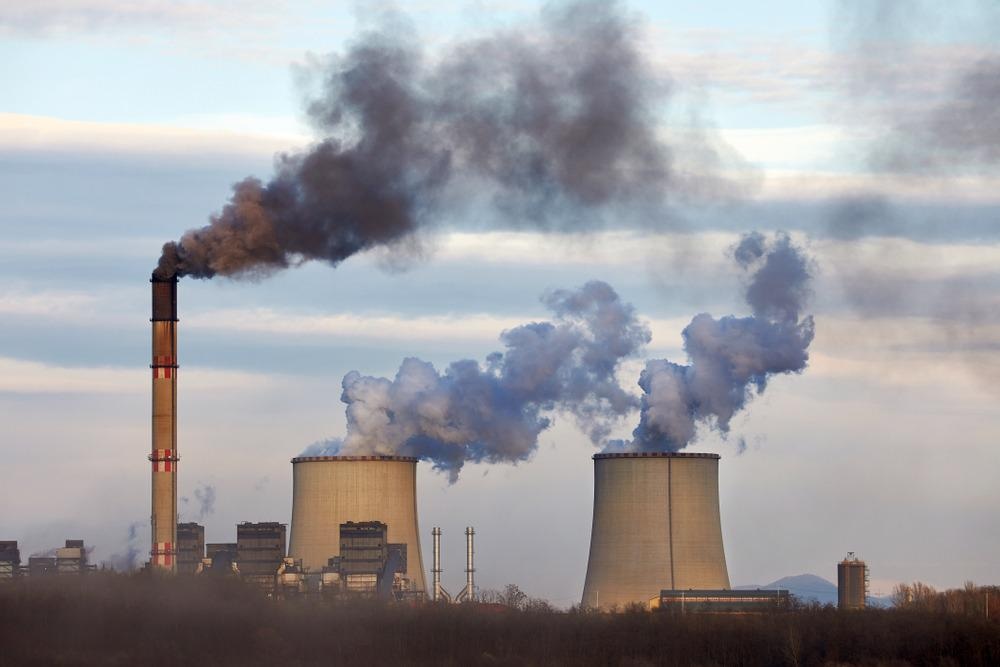Swedish steel manufacturer SSAB is in partnership with LKAB and Vattenfall to produce the world’s first commercially available fossil fuel free steel. In July, the first shipment of the sustainable steel product was shipped to a real customer, and a new partnership between SSAB and construction giant Peab will deliver the material to the building industry.

Image Credit: Anusorn Abthaisong/Shutterstock.com
On 21 July, 2021, the world’s first fossil fuel free steel was commercially produced for SSAB customer Volvo, the Swedish automotive and manufacturing multinational. This was an important milestone for the HYBRIT project, which is trying to end steel manufacturing’s reliance on fossil fuels.
SSAB is delivering the HYBRIT project in partnership with mining firm LKAB and power company Vattenfall (both owned by the Swedish government). The partnership was formed in 2016. The three partners are aiming to drastically reduce the carbon footprint of steel and iron production.
They have replaced fossil fuels used in iron ore reduction with hydrogen, and spearheaded developments in electric arc reduction techniques for steel manufacturing. Both of these processes can significantly limit (if not entirely eliminate) the embodied carbon in processed steel.
Reflecting on the successful first commercial shipment of fossil fuel free steel to Volvo, SSAB CEO Martin Lindqvist expressed hope that theirs would be an example for the rest of the global steel industry to reduce its overall carbon footprint.
The first fossil-free steel in the world is not only a breakthrough for SSAB, it represents proof that it’s possible to make the transition and significantly reduce the global carbon footprint of the steel industry. We hope that this will inspire others to also want to speed up the green transition.
Martin Lindqvist, SSAB CEO
The Climate Impact of Steel
Steel manufacturing is a massive contributor to climate change, accounting for approximately 7% of the world’s total greenhouse-gas emissions. Some forecast that the demand for steel will be around twice its current rate within 30 years, so finding ways to drastically improve sustainability in steel manufacturing is critical.
Techniques for producing iron and steel have not changed much since humans first discovered metallurgy in the Iron Age. We apply as much heat as we can to some metallic material until it is pure enough to be a useful metal.
Traditional steel manufacture makes use of 30 m high blast furnaces capable of producing 9,000 tonnes of iron daily. Instead of the charcoal used by our ancient ancestors, modern steel manufacturers use coke (a processed form of coal) to heat up the furnaces. Furnaces are top-loaded with coke and solid iron ore, then molten iron comes out of the bottom. Molten iron is then processed into steel.

Image Credit: Peter Gudella/Shutterstock.com
This energy-intensive process now happens on an enormous, industrial scale. After the Industrial Revolution, steel is used everywhere. Household appliances, industrial machinery, cars, trains, ships, airplanes, skyscrapers, bridges, pylons, tools, and kitchenware – the list of things we make with steel is almost endless.
We produce approximately 1.8 billion tonnes of steel annually, in a $2.5 trillion global market. This level of steel production currently entails more than 2.7 billion tonnes of CO2 emissions, mostly from burning coke in blast furnaces.
What is Fossil Fuel Free Fuel?
Inside conventional blast furnaces, carbon (in the coke) is being used to remove oxygen from the iron ore. As the coke burns, it sucks in that oxygen to sustain the heat (like in a fire). This creates CO2 (carbon dioxide) and releases it into the atmosphere in polluting smoke.
More Steel Innovations: Inflated Steel Technology for Ultra-Lightweight Architecture
However, if a hydrogen fuel is used instead of carbon then only H2O (water) is emitted. Hydrogen can be employed in both iron and steel reduction processes in place of fossil fuels like coke and coal.
Oxelösund, an SSAB facility in Sweden, rolled the first fossil fuel free steel using hydrogen-fuelled technology developed by the HYBRIT partnership. The electric arc reduction method employed in this roll is actually more energy intensive than using blast furnaces (about 20% to 30% more costly in terms of kWh required). However the process allows for the use of hydrogen, which does not emit greenhouse gases when burned as fuel.
It is important to note that hydrogen is only really fossil fuel free if it is produced using renewable electric power. This is due to the high energy costs of hydrogen production, which if met by conventional fossil fuel power severely limit the end product’s sustainability credentials. The initial Oxelösund shipments of fossil fuel free steel are said to be fully fossil fuel free by SSAB and partners.
Next Steps for Fossil Fuel Free Steel
SSAB and the other HYBRIT partners are rapidly moving on from their initial successful delivery of fossil fuel free steel to Volvo in July. A new partnership was announced that will see construction multinational Peab using HYBRIT steel products in building and infrastructure projects.
Lindqvist said: “Together, we also strengthen the position for fossil-free steel in the construction industry, while also helping to reduce global carbon dioxide-emissions.”
References and Further Reading
Hutson, M. (2021). “The Promise of Carbon-Neutral Steel.” New Yorker. Available at: https://www.newyorker.com/news/annals-of-a-warming-planet/the-promise-of-carbon-neutral-steel.
Pei, M., M. Petäjäniemi, A. Regnell, and O. Wijk (2020). “Toward a Fossil Free Future with HYBRIT: Development of Iron and Steelmaking Technology in Sweden and Finland.” Metals. https://doi.org/10.3390/met10070972.
“SSAB to deliver fossil-free steel to Peab.” (2021) SSAB. Available at: https://www.ssab.com/news/2021/10/ssab-to-deliver-fossilfree-steel-to-peab.
“The world’s first fossil-free steel ready for delivery.” (2021) SSAB UK. Available at: https://www.ssab.co.uk/news/2021/08/the-worlds-first-fossilfree-steel-ready-for-delivery.
Disclaimer: The views expressed here are those of the author expressed in their private capacity and do not necessarily represent the views of AZoM.com Limited T/A AZoNetwork the owner and operator of this website. This disclaimer forms part of the Terms and conditions of use of this website.